Few artists have captured the world’s attention with as much stealth, satire, and political urgency as Banksy. The anonymous British street artist, active since the early 1990s, has become a cultural phenomenon whose work blends biting commentary with unexpected humor. While many recognize his instantly iconic imagery—balloon girls, rats with placards, or kissing coppers—it is Banksy’s political artworks and audacious street stunts that define him as a provocateur and activist.
Banksy’s art is not created for galleries but for the streets, warzones, and global media. His interventions confront topics such as war, capitalism, surveillance, immigration, and inequality with a sharp visual language and deeply resonant symbolism. We explore Banksy’s most political pieces and guerrilla acts, revealing how his works serve as a visual resistance in an increasingly divided world.
Napalm (Can’t Beat That Feeling), 2004
One of Banksy’s most disturbing images, Napalm is a scathing critique of American militarism and the commercialization of trauma. The image features the iconic photograph of Phan Thi Kim Phúc, the “napalm girl” from the Vietnam War, flanked by Mickey Mouse and Ronald McDonald. Smiling and holding her hands, the two symbols of Western capitalism appear grotesquely out of place.
This juxtaposition exposes the hypocrisy of Western values: consumerism, entertainment, and corporate branding used to sanitize and distract from historical atrocities. Banksy confronts viewers with the uncomfortable truth that suffering, when repackaged in media, can be rendered invisible beneath the noise of capitalism.

The Walled Off Hotel, 2017
Perhaps Banksy’s most ambitious political project, The Walled Off Hotel is a fully functioning boutique hotel located directly beside the West Bank barrier wall in Bethlehem. Described as having “the worst view in the world,” the hotel features rooms filled with Banksy’s art, satirical installations, and commentary on the Israeli–Palestinian conflict.
The wall itself—covered in graffiti and slogans—forms both a physical and ideological backdrop. Inside, Banksy mixes dark humor with political awareness: cherubs with gas masks, riot police as classical figures, and barbed wire forming decorative motifs. The project blurs the line between art and activism, inviting tourists to experience occupation firsthand and sparking conversation around one of the world’s most contentious borders.
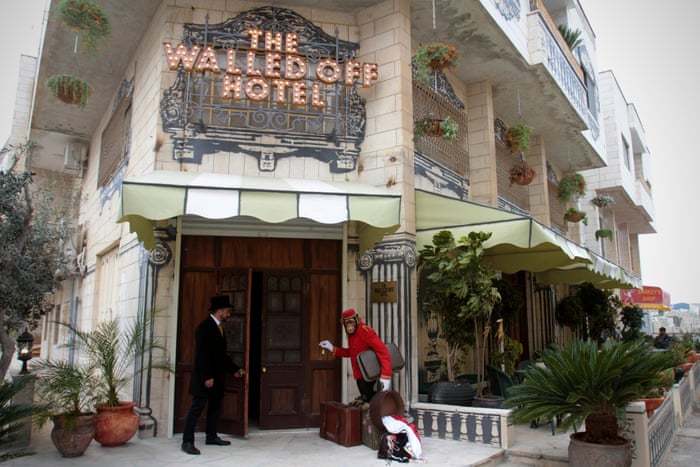
Kissing Coppers, 2004
Originally stenciled on the side of a Brighton pub, Kissing Coppers shows two male British police officers locked in a passionate embrace. While humorous at first glance, the piece challenges authority, masculinity, and the institutional conservatism of law enforcement. By depicting police as vulnerable and affectionate, Banksy dismantles traditional power dynamics and critiques the criminalization of queer identity.
The work also touches on the broader tension between state power and civil liberties. In a climate where police surveillance and control are frequently debated, Kissing Coppers reimagines the enforcers of law as human, complex, and contradictory.

Girl with a Pierced Eardrum, 2014
A play on Vermeer’s Girl with a Pearl Earring, this large-scale mural in Bristol replaces the pearl with a security alarm. The piece reflects on surveillance culture, referencing the UK's extensive CCTV network. Banksy often engages with themes of state control and loss of privacy, and here, he uses a classic artwork to critique how deeply embedded surveillance has become in everyday life.
The work underscores Banksy’s recurring concern: who is watching whom, and at what cost? In an age of digital surveillance and government overreach, the message remains startlingly relevant.

Devolved Parliament, 2009
This large canvas depicts the British House of Commons populated entirely by chimpanzees. First exhibited in 2009 and re-exhibited during the Brexit debates in 2019, Devolved Parliament is a devastating satire of the UK’s political class. By replacing MPs with apes, Banksy mocks the dysfunction, tribalism, and theatrical absurdity of modern democracy.
The painting became especially powerful in the years following the Brexit referendum, reflecting growing disillusionment with political leadership. It holds up a mirror to the chaos and performative nature of politics, where spectacle often overshadows substance. Devolved Parliament became one of the most Banksy expensive artworks when it sold at auction in 2019 for 12.2m USD.

Mediterranean Sea View 2017
This triptych of oil paintings was first shown in The Walled Off Hotel and later sold at auction to raise over £2.2 million for a Bethlehem hospital. Each painting depicts a stormy seascape in the romantic tradition of Turner or Constable—but Banksy interrupts the serene beauty with life jackets and refugee debris washing ashore.
The work is a haunting tribute to the ongoing Mediterranean migrant crisis, in which thousands have drowned seeking safety in Europe. By fusing classical style with contemporary tragedy, Banksy forces viewers to reconcile cultural romanticism with modern humanitarian disaster.
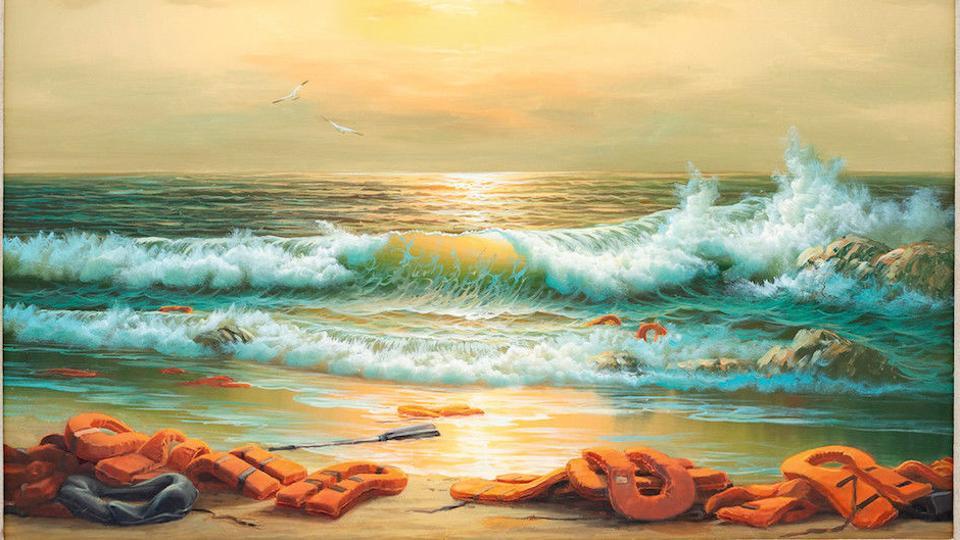
The Dismaland Project, 2015
A dystopian art installation and satirical theme park, Dismaland brought together over 50 artists in Weston-super-Mare. Modeled as a derelict version of Disneyland, the park featured grim reinterpretations of fairy tales, police brutality exhibits, refugee boats, and subversive interactive experiences.
Banksy described it as “a festival of art, amusements, and anarchy.” Beyond visual spectacle, Dismaland served as a harsh critique of entertainment culture, environmental decay, and the desensitization of society to injustice. Proceeds from the park were later used to fund refugee shelters in Calais, France.
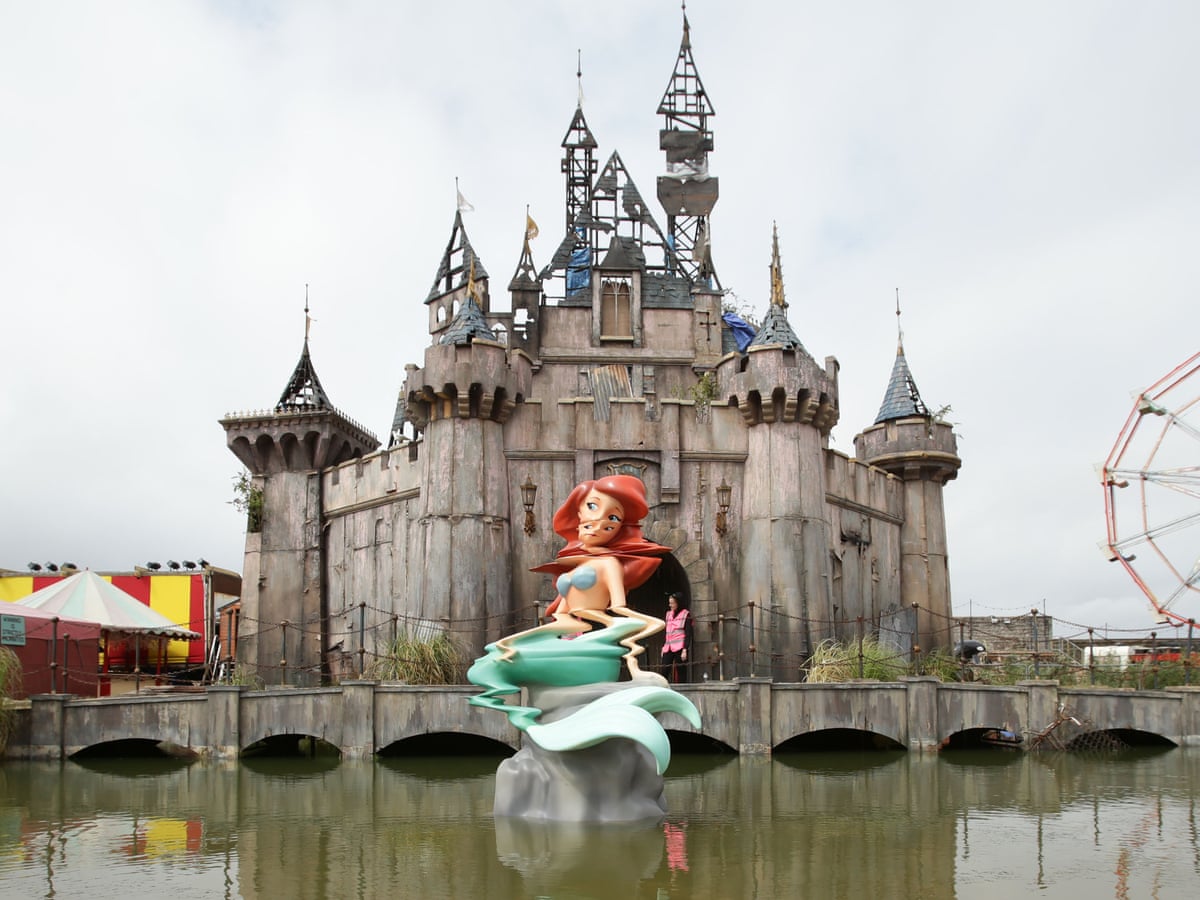
Steve Jobs in Calais, 2015
In the wake of Europe’s refugee crisis, Banksy painted a powerful image of Steve Jobs—complete with black turtleneck and Mac computer—on a wall in the Calais refugee camp known as “The Jungle.” The message was clear: Jobs, the son of a Syrian immigrant, is proof that refugees can become global innovators if given opportunity and humanity.
The artwork directly challenged the xenophobic rhetoric surrounding migration, particularly in the UK and France. It reminded the world that every displaced person carries untapped potential and that compassion and inclusivity fuel progress—not walls and borders.
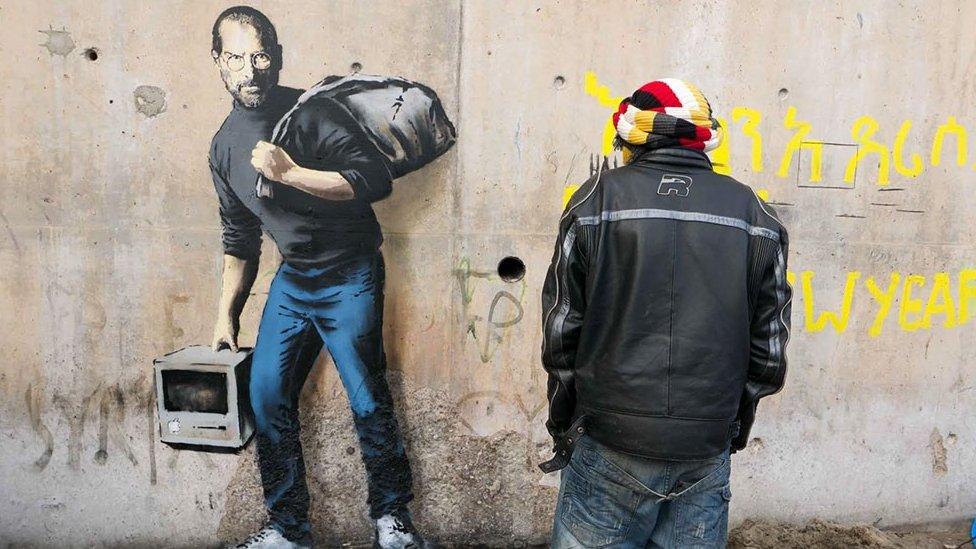
Shredded Love: Girl with Balloon at Sotheby’s, 2018
While not explicitly political in subject, Banksy’s stunt at Sotheby’s was a masterclass in institutional critique. Moments after Girl with Balloon sold for £1 million, the artwork began to self-destruct via a hidden shredder embedded in the frame. Retitled Love is in the Bin, it became the first artwork created during a live auction.
This act challenged the commercialization of street art and the complicity of auction houses in transforming protest into profit. It exposed the contradictions at the heart of the art market—where anti-capitalist works fetch capitalist prices.

UK Parliament Brexit Murals and London Tube Rats
Banksy has returned time and again to themes of British identity and political upheaval. During Brexit, various unofficial Banksy works appeared critiquing nationalism and isolationism. One of his Tube interventions in 2020—featuring masked rats and COVID-19 graffiti—linked public health with government incompetence, urging Londoners to wear masks and resist misinformation.
These more recent works show that Banksy remains responsive to evolving political realities, turning public infrastructure into spaces of urgent commentary.
Banksy’s political works aren’t confined to galleries or museums—they exist in alleys, war zones, refugee camps, and online feeds. With anonymity as armor, Banksy bypasses censorship, markets, and state power, using art as direct communication. Whether he’s tackling war, capitalism, or immigration, Banksy makes the invisible visible—and forces us to confront truths that are too often ignored.
His work asks not only what art is but what it does. And in an increasingly fractured world, Banksy’s art remains a powerful reminder that resistance, humor, and humanity still have a place in public life.
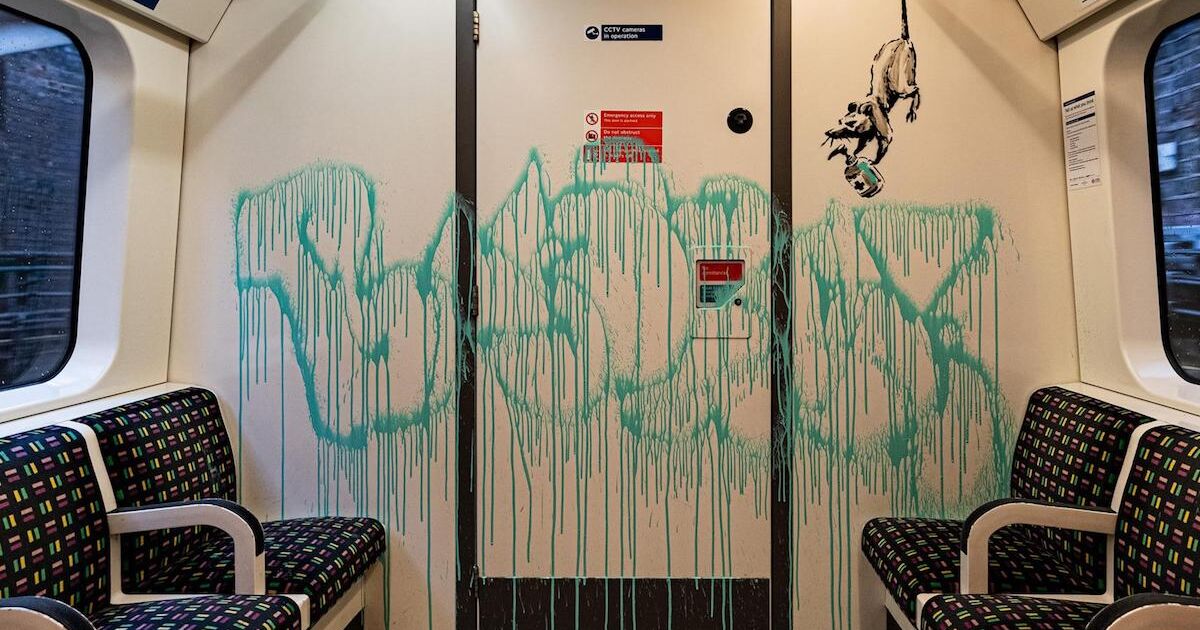
Discover Banksy signed prints for sale and contact our galleries for further information to buy Banksy paintings via info@guyhepner.com or, if you’re looking to sell, find out how to sell Banksy prints.
Discover more useful articles in Who is Banksy? Banksy vs Warhol and What is Banksy Pest Control?
